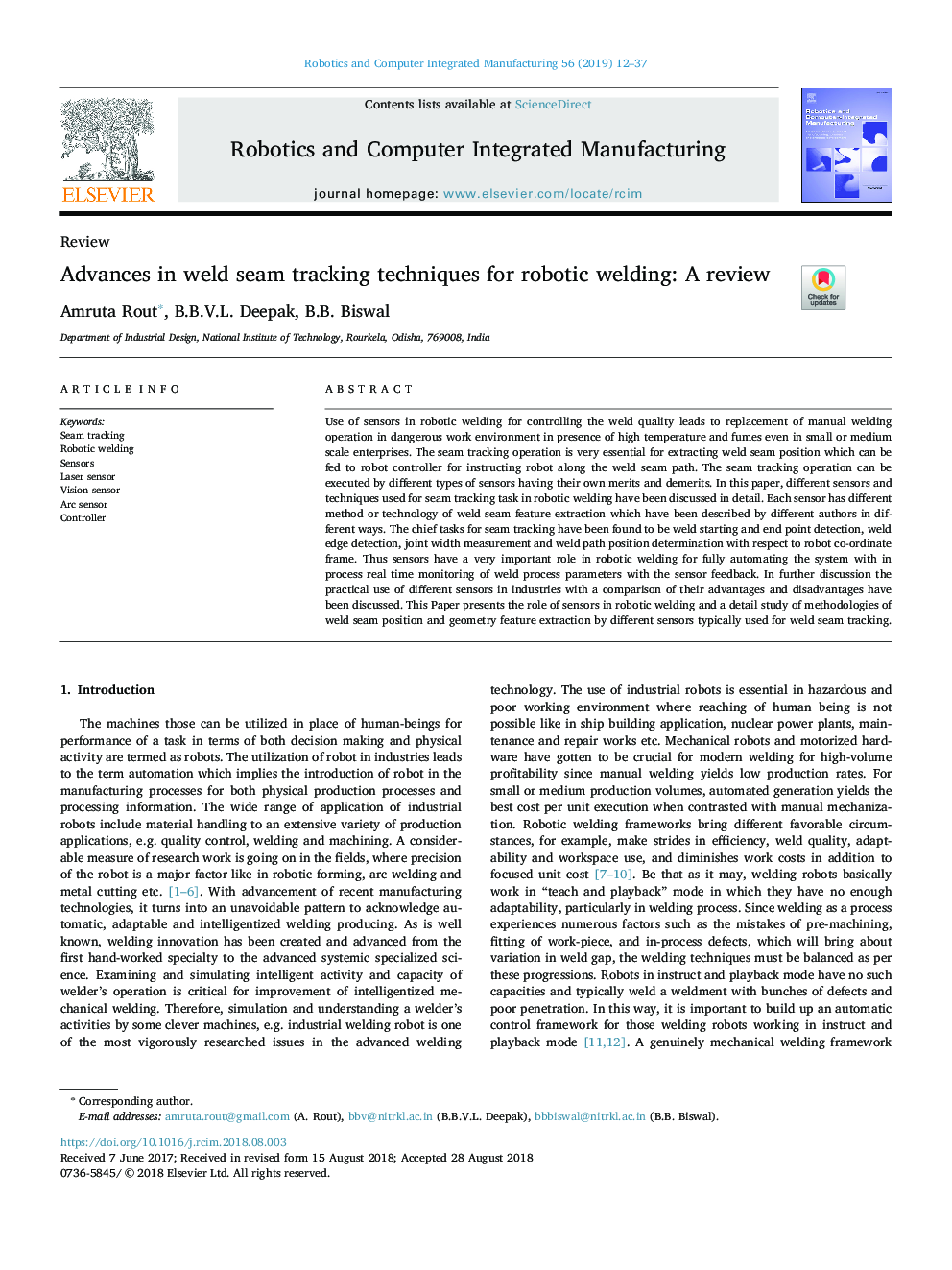| Article ID | Journal | Published Year | Pages | File Type |
|---|---|---|---|---|
| 10139255 | Robotics and Computer-Integrated Manufacturing | 2019 | 26 Pages |
Abstract
Use of sensors in robotic welding for controlling the weld quality leads to replacement of manual welding operation in dangerous work environment in presence of high temperature and fumes even in small or medium scale enterprises. The seam tracking operation is very essential for extracting weld seam position which can be fed to robot controller for instructing robot along the weld seam path. The seam tracking operation can be executed by different types of sensors having their own merits and demerits. In this paper, different sensors and techniques used for seam tracking task in robotic welding have been discussed in detail. Each sensor has different method or technology of weld seam feature extraction which have been described by different authors in different ways. The chief tasks for seam tracking have been found to be weld starting and end point detection, weld edge detection, joint width measurement and weld path position determination with respect to robot co-ordinate frame. Thus sensors have a very important role in robotic welding for fully automating the system with in process real time monitoring of weld process parameters with the sensor feedback. In further discussion the practical use of different sensors in industries with a comparison of their advantages and disadvantages have been discussed. This Paper presents the role of sensors in robotic welding and a detail study of methodologies of weld seam position and geometry feature extraction by different sensors typically used for weld seam tracking.
Related Topics
Physical Sciences and Engineering
Computer Science
Artificial Intelligence
Authors
Amruta Rout, B.B.V.L. Deepak, B.B. Biswal,
